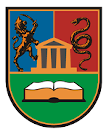Please use this identifier to cite or link to this item:
https://scidar.kg.ac.rs/handle/123456789/17654Full metadata record
| DC Field | Value | Language |
|---|---|---|
| dc.rights.license | Attribution-NonCommercial-NoDerivs 3.0 United States | * |
| dc.contributor.author | Jurišević, Nebojša | - |
| dc.contributor.author | Stojadinovic, Miroslav | - |
| dc.contributor.author | Končalović, Davor | - |
| dc.contributor.author | Rakic, Nikola | - |
| dc.contributor.author | Kowalik, Robert | - |
| dc.contributor.author | Gordić, Dušan | - |
| dc.date.accessioned | 2023-04-24T08:56:41Z | - |
| dc.date.available | 2023-04-24T08:56:41Z | - |
| dc.date.issued | 2023 | - |
| dc.identifier.issn | 04789733 | en_US |
| dc.identifier.uri | https://scidar.kg.ac.rs/handle/123456789/17654 | - |
| dc.description.abstract | Imposed measures for the protection of public health and prevention of the uncontrolled spread of COVID-19 disease affected before established community traveling patterns. One of the questions scientific community consequently wonders consider the potentials of the occurred circumstances to leave permanent change to community traveling behavior. With that regard, this study examines changes in students’ traveling habits in a medium-sized university city in the Balkans. The research was based on 486 students’ responses amassed by Google questionnaires, before and during the COVID-19 pandemic. The study includes data interpretation and data analysis. Among six introduced classification models, random forest proved as the most suitable to accurately fit the students’ demographic details to students’ attitude towards future traveling habits (as changed or not changed permanently). Additionally, the model was optimized and further analyzed on variable influence and variable partial dependence. Data interpretation indicates higher reliance on personal automobiles as a cause for a 15% increase of the families owning two of the vehicles. Because of that, the share of the students who walked to the University during the pandemic declined by approximately 20%, while those using public transportation stayed relatively unchanged (decrease by around 3%). On the other side, the best of six classification models was used to determine the factors causing a permanent change in students’ attitudes towards inner-city transportation. Derived classification models deduce where to expect potentially permanent changes in traveling patterns – distances between 2 and 4 km from the University, and among which students – those who are visiting lectures less frequently than others. | en_US |
| dc.language.iso | en | en_US |
| dc.rights | info:eu-repo/semantics/openAccess | - |
| dc.rights.uri | http://creativecommons.org/licenses/by-nc-nd/3.0/us/ | * |
| dc.source | Put i saobraćaj | - |
| dc.subject | Transportation modes | en_US |
| dc.subject | Inner-city travel | en_US |
| dc.subject | University | en_US |
| dc.subject | COVID-19 | en_US |
| dc.title | Changes in students’ inner-city traveling habits caused by protective measures against COVID-19 disease – example of the medium-sized university city in the Balkans | en_US |
| dc.type | article | en_US |
| dc.description.version | Published | en_US |
| dc.identifier.doi | 10.31075/PIS.69.01.02 | en_US |
| dc.type.version | PublishedVersion | en_US |
| Appears in Collections: | Faculty of Engineering, Kragujevac | |
Files in This Item:
| File | Description | Size | Format | |
|---|---|---|---|---|
| 267-Article Text-1020-2-10-20230404.pdf | 1.36 MB | Adobe PDF |  View/Open |
This item is licensed under a Creative Commons License


